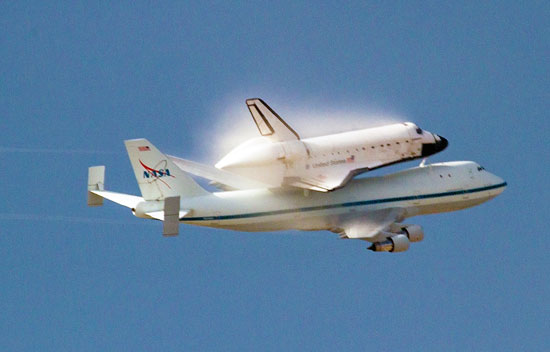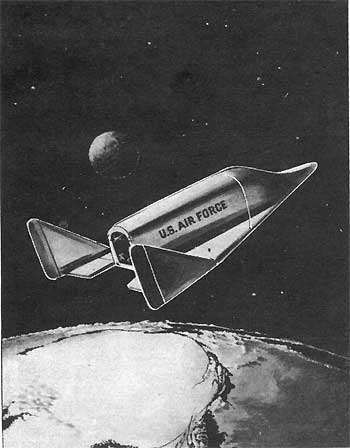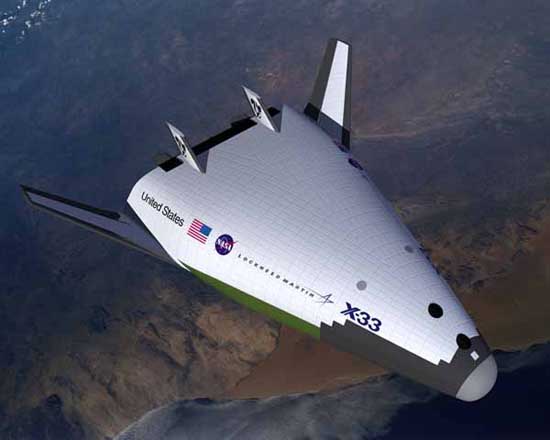Space Shuttle
by Fitz Walker
Today, remembering the story of the shuttle. The University of Houston presents this series about the machines that make our civilization run, and the people whose ingenuity created them.
The space shuttles fly no more. Fraught with exceptional achievement and equally exceptional tragedy, the shuttle era has come to an end. Nearly everyone has seen pictures of NASA Space shuttles flying piggy-back over various cities on their way to their final resting places. Places where generations to come are able to view and explore these flawed but great machines. Machines that have a longer history than you might realize.

Final flight of the Space Shuttle Endeavour in Houston
As NASA was preparing to land men on the moon, visionaries were already thinking up the next generation of space ships. There was no shortage of ideas, of course, but one concept that became very common was that of a re-usable space vehicle. The rockets used to send men to the moon were big and powerful, but also almost completely thrown away after every launch. Only a small fraction of a vehicle that started out nearly 400 feet tall would come back to earth. So if we were to conquer space travel, we would need vehicles that were far less wasteful and more like an airliner. So the theory went.
Early designs of a re-usable space vehicle bore little resemblance to The Space Shuttle. One concept had what looked like two airplanes stacked onto one another. Another idea even had helicopter rotor blades for landing.
Not to be left out was Warner Von Braun — father of the American space program. Von Braun had his own ideas for a space transportation system way back in the 1950's. His idea of a re-usable space plane was mostly seen as science fiction at the time. But just a decade later his general concepts would be taken very seriously.
That would be another design called the Dyna-Soar. A ship that would dynamically soar through the atmosphere. This was the first of the re-useable space vehicle concepts. And it somewhat resembled the shuttle design. It was never built. But the Dyna-Soar can be considered the first real attempt at building a winged spaceship.

X-20 Dyna-Soar concept
NASA did go on to build several other oddly shaped airplanes. These were used to simulate flying a shuttle like vehicle. If you watched the old TV show, "Six million Dollar man", then you've seen the crash of one of them in the opening credits. Just like the TV show, its test pilot miraculously survived. These tests also proved the viability of flying an unpowered aircraft from orbit to a controlled landing. And by the early 1970s, the design that would eventually become The Space Shuttle was chosen.
This Shuttle was not meant to be the final word on the re-usable space vehicle concept. The next generation of shuttles were to be something called single stage to orbit. This means that the spacecraft would actually take off like an airplane and fly into space using sophisticated engine technology. Most of those designs never really left the drawing board. Though, one was nearly completed just before being cancelled.

X-33 single-stage-to-orbit shuttle concept
For better or worse, the Space Shuttle remains one of the great engineering feats of the 20th century. The shuttle era is over. Long live the shuttle!
I'm Fitz Walker on behalf of the University of Houston, interested in the way inventive minds work.

Houston's final look at Space Shuttle Endeavour
Both Space Shuttle Endeavour photos are courtesy of Dr. John Lienhard.
Second image courtesy of http://epizodsspace.no-ip.org/bibl/spaceflight/23/sp.html
X-33 VentureStar image courtesy of NASA.
Harland, David M. The Story of the Space Shuttle. Springer, 2004. Print.
This episode was first aired on November 16, 2012